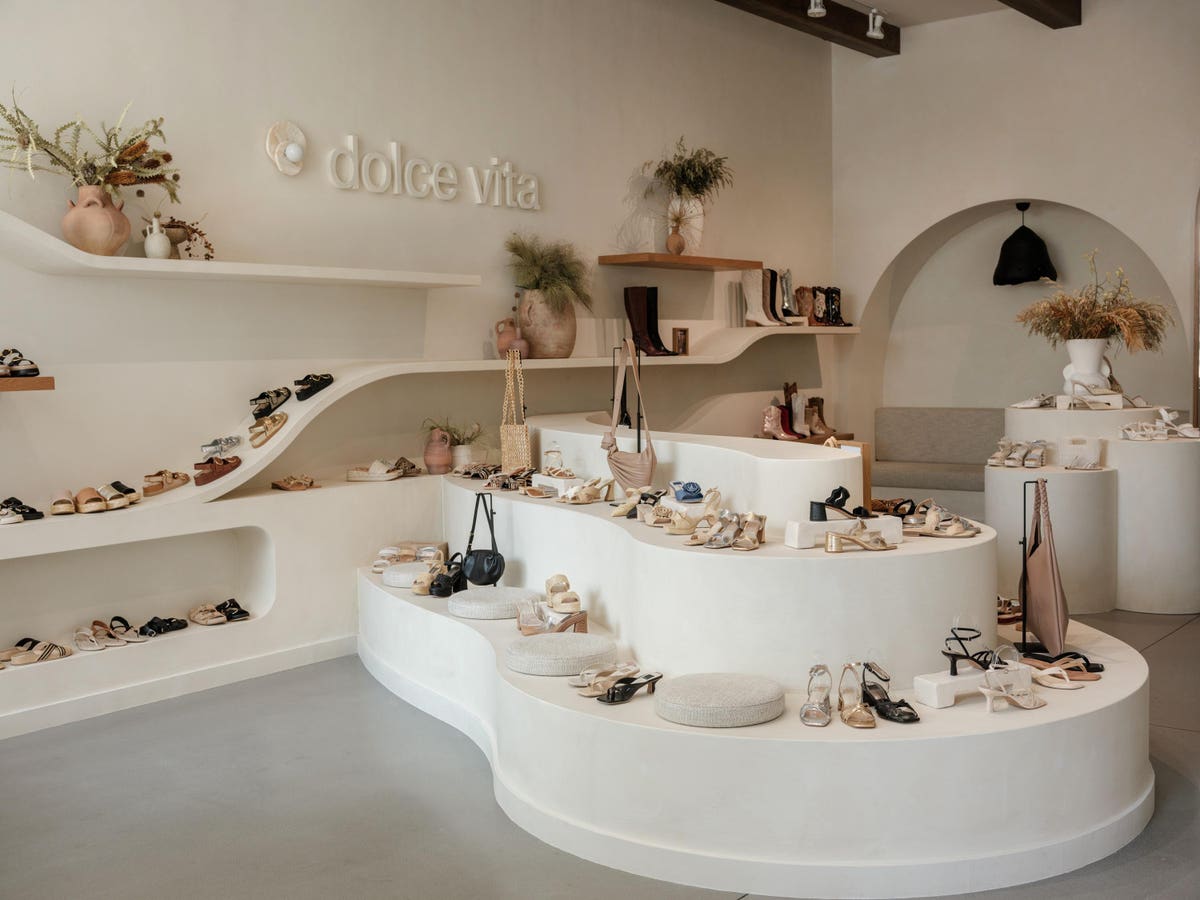While opening physical stores in the digital age may seem counterintuitive, many brands still lean toward brick-and-mortar retail to build deeper customer relationships in key markets.
“For the right brand, opening a retail location can be a smart move for three reasons: brand experience, credibility, and marketing. A retail store is like a permanent billboard advertising the brand but provides a richer, more tactile brand experience,” said X user EyeForRetail.
Data echoes this sentiment: Forrester’s research suggests that 72% of total US retail sales will occur in brick-and-mortar stores into 2028. Pair this with data showing the majority (64%) of tech-savvy Gen Z consumers prefer to shop offline, and it’s easy to see how physical stores are still very much in demand.
Fashion brands like Dolce Vita, Skims, and Revolve have begun opening retail locations in recognition of brick-and-mortar retail’s sustained relevance and profitability.
In the case of footwear brand Dolce Vita, the decision to open retail stores was driven by a belief in the power of the in-store shopping experience. Dolce Vita opened its flagship store in New York in April 2023, and three more locations have been opened since then, including the latest in Austin, Texas, which opened in May 2024.
Kerry Norlin, President of Dolce Vita footwear, said: “Having our product available both through wholesale and website allowed customers to shop conveniently from home, but we also saw a growing desire for personal, in-store experiences.”
Other brands are taking similar approaches: Loungewear brand Skims inaugurated its first permanent store in Washington, DC, with a Georgetown hub in June 2024. The Revolve Group also debuted its storefront in Aspen, Colorado the same month, featuring collections from its owned Revolve and Fwrd luxury brands.
Outdoor retailer L.L. Bean is also opening more retail stores this year, with plans to open three new locations this fall in several of its target markets, including Pennsylvania, Connecticut, and Indianapolis.
Investing in retail locations helps brands offer omnichannel experiences, which 43% of business leaders see as a growing need.
This approach also offers a competitive and financial edge, allowing brands to capitalize on trends like click-and-collect sales, which are expected to exceed $200 billion by 2028.
Retail stores also serve as a permanent marketing tool, increasing visibility and customer engagement.
Norlin explained, “We’re opening stores like our new location in Austin with several key goals in mind: enhancing brand awareness, providing a serene space for our teams to connect with our customers in person, and creating a one-of-a-kind shopping experience through our unique design concept and inviting atmosphere.”
Moreover, having a space for customers to try products in person significantly reduces returns, a $200 billion dilemma for online retail. A physical store reduces return rates by reducing issues related to sizing, perception of quality, and immediate gratification.
But is opening a brick-and-mortar store worth the plunge? The average retail rental space rate is $24.69 per square foot, with the highest being $33.35 per square foot in malls. But prime locations, such as New York’s 5th Avenue, can demand up to $2,750 per square foot.
Beyond rent, brands must also factor in other expenditures, including store operation costs, technology investments, human resources, and utilities.
Many brands turn to pop-ups to test the waters before making a large-scale investment. Skims and Revolve used this approach, and although Dolce Vita did not start as a DTC brand, it was represented in numerous cities through wholesale relationships with boutique stores.
Other brands, like Bonobos, lessen the load by taking a zero-inventory approach. By not maintaining inventory in-store, brands can reduce costs, save space, and free up human resources while still creating a valuable customer touchpoint.
In-store events and partnerships are another way brands leverage retail spaces as community hubs for customers rather than viewing them as merely another avenue for driving sales.
“We’re collaborating with our local Austin team to explore ways our brand can engage with local events,” Norlin said of Dolce Vita’s approach, citing an upcoming event where they will have treats and a permanent jewelry pop-up shop with The Bond Society in-store.
Brick-and-mortar stores continue to appeal to brands for their enduring appeal, credibility, and brand experience opportunities. Despite the cost and investment involved in this strategy, more brands are testing for the potential returns in categories like customer engagement, reduced returns, and increased brand awareness.
Read the full article here





